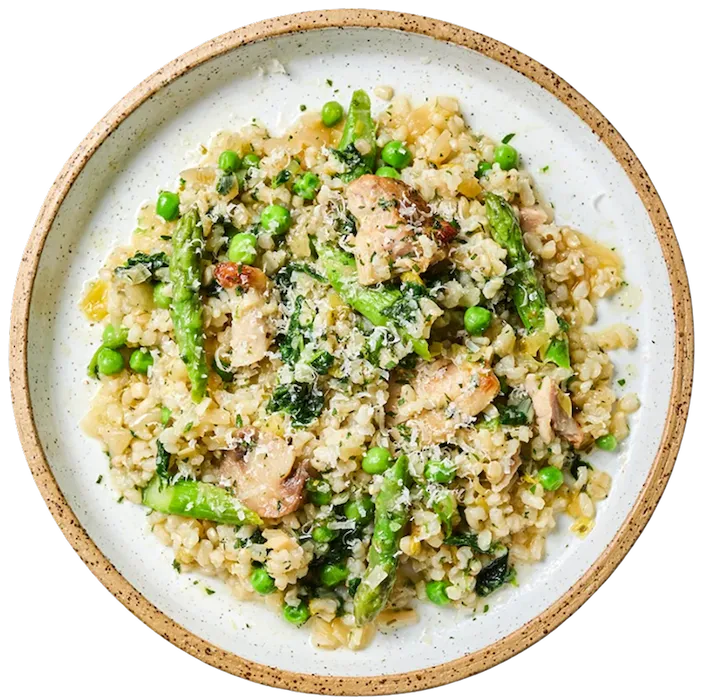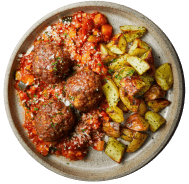Nutrition and ADHD – what's the link?
This ADHD Awareness Month, we want to shine a light on something that often gets overlooked - how hard eating well can be when you have ADHD. It’s not just about willpower or planning. ADHD can affect things like appetite, routine and food choices, which can make healthy eating much harder. We asked our Dietitian Laura to explain more.
What is ADHD?
Attention deficit hyperactivity disorder (ADHD) is a neurodevelopmental condition where the brain processes information differently from what’s considered typical.
It’s broadly characterised by inattention, impulsivity, and hyperactivity. In daily life, this can look like difficulty focusing on tasks, making careless mistakes, losing important items, or struggling with organisation and planning. These differences can also affect day-to-day tasks like planning meals, remembering to eat, and making healthy food choices.
Although ADHD was once thought to only affect children, we now know it can persist into adulthood. An estimated 3–4% of UK adults have ADHD, and around 80% of them are thought to be undiagnosed.
What Impact Does Diet Have on ADHD?
We know nutrition plays a vital role in brain health, but research specifically looking at ADHD and diet in adults is still limited. Most studies have focused on children.
Some evidence suggests that a ‘few foods diet’ - where foods are eliminated and reintroduced to identify triggers - may help improve symptoms in some children.
There aren't any evidence-based recommendations for a diet to improve ADHD symptoms in adults. However, research has shown that both adults and children with ADHD are more likely to follow less healthy eating patterns compared to the general population.
A recent UK study also found that adults with ADHD had insufficient levels of key nutrients for brain health, including omega-3 fatty acids, zinc, B-vitamins and vitamin D.
There are several possible explanations for this. Healthy eating can be particularly challenging when the skills needed – like planning, organisation and time management - are exactly the ones ADHD affects.
For example, people with ADHD can
- Struggle with meal planning
- Forget to eat, which can lead to irregular mealtimes
- Find cooking overwhelming and recipes hard to follow
- Make impulsive food choices
- Experience a stronger reward response from highly palatable foods
- Struggle with medication side effects such as reduced appetite, disrupted sleep, dry mouth, and gut symptoms
- Experience sensory issues that makes some textures or tastes overwhelming, and which can increase the risk of Avoidant Restrictive Food Intake Disorder (ARFID).
- Be at a higher risk of binge eating behaviours
Emerging research also suggests the gut microbiome might play a role in ADHD, and because diet influences gut health, this could be another pathway through which nutrition impacts symptoms.
So, what role can nutrition play in ADHD?
A healthy, balanced diet with sufficient vitamins and minerals and omega-3 fats is important for overall brain health, but eating this way can be challenging for someone with ADHD.
So, the focus should be on reducing barriers to make healthy eating easier, simplifying choices and building supportive routines.
Practical Tips to Make Eating Well Easier for Individuals With ADHD
1. Use Timers and Reminders
- Set alarms for meals and snacks to prevent long gaps without eating
- Use digital reminders for a weekly food shop
- Keep a shared or digital shopping list to stay organised
2. Outsource Where You Can
- Choose pre-chopped fruit and vegetables
- Use ready-to-eat proteins like rotisserie chicken or tinned fish or beans
- Don’t overlook healthy ready meals - they can be a helpful tool
3. Stock Your Freezer Strategically
- Keep frozen fruit and veg such as berries, peas, spinach and peppers in your freezer - these are just as nutritious as fresh and won’t go to waste
4. Create a Go-To List of Low-Effort Snacks
Having a go-to list removes the need to make decisions when energy is low. Try combinations like:
- Apple with peanut butter
- Hummus with oatcakes or crackers
- Greek yoghurt with frozen berries
5. Use a Simple Meal Formula: Protein + Carbohydrate + Vegetable
This reduces the need for planning while keeping meals balanced. For example:
- Chilli and coriander prawns + wholegrain rice + frozen broccoli
- Rotisserie chicken + baked sweet potato + Mediterranean-style vegetables
- Mixed bean salad + steamed rice pack + tomato salsa
- Eggs + wholegrain toast + frozen peas or spinach
Don't go it alone
Using strategies like these can help overcome some of the challenges and make it easier to eat well if you have ADHD. But, if eating becomes stressful or starts to affect day to day functioning, help from a specialist Dietitian can be a really beneficial next step.
related content
more content: Mental Health
browse our ranges.
choose from one of our ranges or personalise your own menu from 60+ meals.
- low FODMAP

- eat well, live well programme

- gluten free

- high protein

- weight management

- ibs

- lowest calorie

- lower carbs

- mediterranean

- smaller range

- pcos

- lean + lighter

- menopause

- heart healthy

- plans

- full menu

- gift cards
- take the quiz